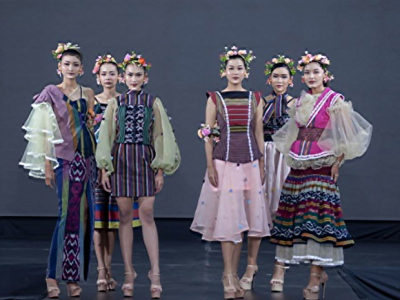Indonesian lurik evolves with the times

Javanese have distinctive traditional fabrics, namely Batik and Lurik. According to a lecturer at the Department of Food and Clothing Engineering, Faculty of Engineering, UNY, Afif Ghurub Bestari, M.Pd lurik comes from the Javanese word "lorek" or "larik" which means "line". “Lurik, according to its name, symbolizes simplicity, honesty, direction, wisdom in thinking, even to the point of strength. Straight and strong like a line,” he said on Monday, August 8, 2022. Every line size, color, and pattern also hints at the Javanese's depth of taste and mindset. Lurik fabric is the result of the weaving process. This cloth is not only used as clothing material but also for scarves, "kemben," and child slings on the shoulders.
Afif Ghurub Bestari, M.Pd explained, as another proof that lurik has existed since ancient times, namely the depiction of lurik cloth on the reliefs of Borobudur temple. In addition, there is also the King Erlangga Inscription in East Java. The inscription states that Tuluh Watu cloth is one of the names of Lurik cloth, a cloth with a simple pattern also believed to symbolize hope, advice, and strength. That's why lurik also has the meaning of treatment and healing. So that in ancient times many herbal medicine sellers used or wore lurik cloth.
Afif Ghurub Bestari explained that there are several well-known lurik patterns in Yogyakarta. One of them is the Udan Liris pattern. In Javanese, Udan Liris means Drizzle Rain. The lines in the striated motif are not the same in thickness, but certain parts are faintly missing. This pattern resembles the raindrops that are expected to fall on agricultural land. Therefore, this pattern is a symbol of fertility and prosperity.
In comparison, the Kluwung pattern has broad stripes with various colors. This striated serves as a repellant or minimizes the negative aura so that a positive atmosphere appears. “There is also the sapit urang pattern, a symbol of battle tactics. Therefore it is often used for army clothing. Right and left straight geometric lines are expected to be the focus of the goal," he said. Tumbar Pecah is another interesting lurik pattern where Tumbar or coriander is one of the spices in Indonesia. Tumbar is round but has straight fibers. If it is split, it will be shaped like a meeting of consecutive lines in different directions. In addition, a broken tumbar emits a fragrant aroma. For this reason, those who wear this pattern are expected to be important people and able to make the nation proud.
Afif said that apart from the names of the lurik patterns that had been previously written, there were many other types of lurik fabrics. With the possibility of being creative and innovating, new variations are now emerging along with the development of lurik patterns. There is no limit to the various size of the line, the combination of colors and blends, and the size of the woven thread. “If anyone thinks that the striated motif is monotonous or static, it is not as varied as other woven fabrics, that's not right. Because it is precisely with the stripes motif that it makes it easier to make various designs that combine with other woven fabrics,” said Afif. However, from the cultural aspect, if what is used is to weave certain motifs, it is still necessary to understand the meaning and philosophy in it.
As the cultural heritage of the Indonesian nation, of course, Indonesian citizens are obliged to maintain the existence of lurik cloth and develop it. For this reason, Afif invites the younger generation of Indonesia always to try to educate the public about the existence of lurik cloth, including its meaning in it, and not just interpret lurik as striped cloth. We must also increase production and marketing solutions while creating innovations and participating more frequently in textile exhibitions and fashion shows. Hopefully, lurik cloth will always maintain its existence as a cultural heritage of the Indonesian nation and can be famous worldwide like Batik cloth. (Dedy, Tj.Lak)

